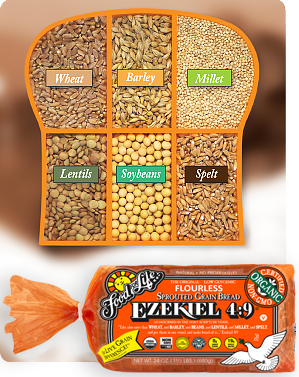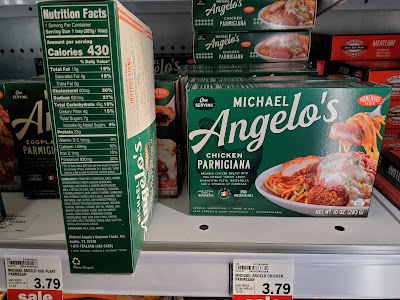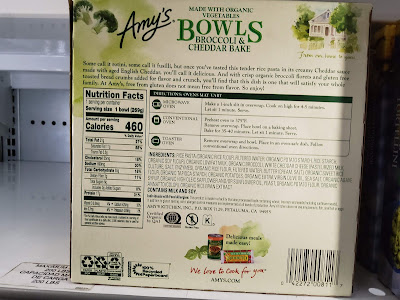Welcome back to my autism-aware shopping trip through the grocery store. Week by week, I'm showing you what the store sells, prune down the selection to what's safe for me (because autistic people can have very sensitive systems) and point out various gotchas the store tries to make you buy stuff you didn't come for.
As a reminder, I shop with the following conditions in mind:
- dairy-free
- low sugar
- avoid ultraprocessed junk
- avoid food coloring
- conditional vegetarianism
- avoid high histamine foods
- awareness of gluten-free options and sugar-free options
Last time we explored the frozen "food" section, where ultra-processed flour, ultra-processed meat (that likely isn't what it says it is), and of course, dairy. We found that, despite most of the aisle being unredeemable junk food, there was the occasional meal that wasn't hideous for you. However, you really had to watch it, because trans fats, massive loads of preservatives, and sneaky sugar bombs are hiding among the options. Even the healthy-looking ones.
This week, though...
It's the very last aisle! I had no idea this series was going to take me months to finish when I started it. We still have to hit the meat and deli departments, and then the vegetables and fruit, but we're almost done.
Anyway, remember all that frozen convenience food we looked at last time? Here's more. It's all pizza.
Seriously, basically this entire side of the aisle is pizza. "How many kinds of pizza could there possibly be?" you might be asking.
Actually, the answer is "a lot fewer than you'd hope." Mostly what we have here is a metric ton of different brands, not pizza varieties. There's variations in crust type... thin crust, regular crust, thick crust, and even stuffed crust. But the toppings are pretty much cheese, often with various kinds of meat (typically pepperoni or sausage, maybe ham once in a while). Maybe you'll get the occasional veggie pizza, or meat plus veggie.
Why am I complaining about variety, you might wonder, when there's all this? Well, here's the thing. US frozen pizza (and much of the typical pizza joint offerings, too) is pretty much crust, tomato sauce, mozzarella cheese (maybe a couple others if you're lucky), and one or more of like... seven basic toppings. Excessively light on the vegetables in almost all cases.
If you look around
the rest of the world, you'll find significantly more variety. Curry powder or other sauces, dozens of cheese types, seafood, even sweet pizzas or fruit pizzas. So given all those options, maybe it's a bit more understandable if I'm not excited about 14 different versions of pepperoni pizza.
The branding varies markedly. It mostly doesn't matter to me, sadly, because cheese is dairy and the crust is ultra-processed grains. The meat, of course, is unlikely to be sourced humanely.
An example of multiple crust types. Rising crust is likely to be a medium to deep dish crust, whereas thin crust will be what it says on the tin.
Did you wonder where the snacks were? Don't worry, I found 'em. Please note the wide variety that still isn't very diverse. Also some of these are strombolis. Those are basically rolled up pizzas, toppings inside. Or at least these are.
Before we say goodbye to the pizza section and move on entirely to the appetizers, let's have a look at the best attempts to make pizza healthy. There's organic versions, dairy-free ones, ones with veggie-based crusts, and gluten-free ones.
The second section, similar to the first. It gets a bit more adventurous by including chicken and cauliflower crusts. I've had cauliflower crust when my uncle came to visit once. It's pretty decent, but I wouldn't be able to mistake it for typical pizza crust.
Which is an issue with most substitutes, really. We always want something that tastes exactly like what we love, but without being unhealthy/allergenic/whatever else. I had the same struggle with veggieburgers for the longest time. Eventually I just got to the point where I appreciated certain veggieburgers (before the era of Beyond Meat/Impossible Burger) for what they tasted like, not how well they replicated what they were replacing.
Starting the move away from pizzas, we now have pizza in appetizer format. They're cheap, they're ultraprocessed, and you can eat a heaping handful of them and still be hungry. But don't worry, it'll still cost you hundreds of empty calories!
If you liked pizza in appetizer format, you may also have lasagna in appetizer format, pizza appetizer on tiny bagels, soft pretzels in various forms, and breaded cheese. I think the healthiest thing in this case is the spinach and artichoke dip, and that's still laden with cheese, so... Probably not even close.
Moving on from convenience appetizers, we apparently didn't get enough convenience food last aisle. So here's more. Grab and go burritos seem to be a big thing, given this section. They're not that hard to make at home, though, though, so this just makes me wonder how these are profitable.
Also, note the dairy-free Daiya options at the top right, as well as a gluten-free option. There's not much, but there's something.
Speaking of Daiya, we're moving onto the other side of the aisle, which has ice cream, and they have stuff here as well. I'm honestly not sure why the ice cream aisle starts out with the allergy- and diet-friendly snack-sized options first, but it does.
I am sorry to say I basically haven't tried any of these. I do enjoy So Delicious's typical ice cream (or frozen dessert, whatever) varieties, so it's likely their ice cream bar style options here are good.
As with any seemingly healthy sweet treats, keep an eye out for what they're sweetened with. The good ones are sugar alcohols, like erithrytol, stevia, and monk fruit. You typically won't find those, but it's worth checking.
And on to the more typical frozen treats. Please don't make the mistake of thinking those "fruit bars" are healthy. Their sugar content tends to be nearly
your full day's serving in one measly bar.
Another thing to watch out for with brightly-colored treats is what they're colored with. Food dye is often very bad news for autistic people and others with sensitive systems. (It's bad news for everyone else too, but we're the ones that show the strongest reactions.)
These are mostly unrepentantly awful for you, so I don't have a ton to say about them other than "seriously, watch your sugar intake." And I guess "gee, I wish all this dairy didn't screw me over."
If a box of frozen treats was too much for you, meet the single serve options, as well as the beginning of the "pint size" section. You'll also note the dairy-free So Delicious, Ben & Jerry's, and, to my astonishment, the local brand Hudsonville.
Some investigation was clearly called for!
This is the nutritional information and ingredients for a pint of caramel cookie dough from Hudsonville. It's coconut based. As you can see, it is pretty much still ice cream. This is not a healthy option, it's simply a dairy-free option. It's sweetened with brown sugar and and cane sugar, which is a pretty basic option. At least it's not artificial sweeteners.
And here we have Ben & Jerrys' take on dairy-free Chocolate Fudge Brownie, with their trademark mix-ins. This is an almond-based product, and like the one above, it is definitely not a healthy snack. I appreciate Ben & Jerry's in particular because A) their typical stuff tastes very good and B) they're pretty darned serious about using Fair Trade, which safeguards the farmers they buy from.
Finally, there's this, which I actually stared at for quite a while before buying. Keto ice cream seems, uh... I dunno, incredibly contradictory? Anyway, here's the nutritional info and the ingredients. This flavor is not nondairy, though they did have a butter pecan variant that was. More notably, check the sugar. Zero grams. How? Well, it's sweetened with erythritol (a sugar alcohol) and monk fruit extract (a plant-based, non-sugar sweetener).
Calories-wise, this still isn't... really... healthy... but it won't rot your teeth or wreck your blood sugar.
The beginning of the "half gallon" section. That's in quotes because they stopped being half-gallons a few years back. One of those "we need to save money so let's just hope they don't notice" measures. This section is more or less organized by brand. Purple Cow is this store's own brand.
There's an acceptable amount of variety on display in these sections. You're still likely to be able to walk down the whole aisle and not find what you're looking for, if it's something obscure. But your chances are better than the pizza aisle, at least.
I don't think I've actually tried this local brand, but one hopes the price includes a significant amount of quality.
If you walked all the way down this aisle for sherbet (naturally dairy-free), here it is. Right along with the gallon tubs of cheap ice cream. I've never stopped to think about how many calories must be packed into those tubs, and now that I have, I am both horrified and also hope it never occurs to me to think about it again.
The aisle ends with even more snack-sized things, because we can never, ever forget where we're shopping. Frozen pies, frozen cheesecakes and ice cream cakes (including dairy-free ones) round off this trip.
I might be slandering one or two items in this aisle, but I honestly don't believe there was a single nutritionally solid item this time. No nourishing food exists here. This is an aisle to skip whenever possible.
And that's the last aisle. Really. There's more store to go, but we've finally hit the end of the numbered aisles. We've still got the meat, deli, bakery, fruit, and vegetable sections to go, but those aren't numbered. They're much more freeform.
As an immediate example, here's the best shot I can get of the Bakery. It's mashed between the meat department and the deli department, in a mostly open space peppered with islands. On the left is the only aisle.
We'll start with that singular aisle, since it's the closest to what we've looked at in the past. It's the bread aisle, where you can find a variety of bread loaves. Notice anything off?
If you said any variation of "hey, what are those snack packs of roasted nuts doing at roughly eye-level in the bread aisle?" please pat yourself on the back, because you win. Apparently unsatisfied with tempting you in literally every other aisle, and also apparently unable to snackify loaves of bread, the store has opted to simply shove a row of unrelated snacks directly in your path.
Yes, that row of snacks goes all the way down to the end of the aisle. It's doubly frustrating once you see the rest of this section.
Anyway, aggravation aside, there's about eleventy billion types of bread. They're more or less by brand. Like the pizza aisle, there's a lot of options without there actually being a lot of variety. Also like the pizza aisle, very little of what's in this aisle is good for you. In large part, most of what's here is ultra-processed.
Honestly, that variety right near the front of the picture is maybe a good example. "15 Grain" whole grain bread. You don't need 15 grains to be healthy, they're literally just throwing in trace amounts of whatever might stick in hopes of grabbing attention and pretending to be healthy.
The other side of this aisle mostly doesn't even pretend to be healthy. It's hot dog buns, burger buns, and at the end, bagels and English muffins. I'm not sure why the latter two were so sold out at the time of the picture.
At the end of the bread aisle, we start getting on towards the bakery counter. But first we have to pass this refrigerated section with the ice cream cakes, cheesecakes, tubbed cookie dough, and other snack options. Because, as we can never ever forget, this store is roughly half snacks.
Speaking of snacks, this is the other side of the hot dog/hamburger buns aisle. And it is all snacks. I've seen these referred to as "sweet breads" which struck me as absurd, and I much prefer the "snack cakes and donuts" sign they've got up here. Yes, this is literally a whole aisle of sugar-coated heart-killing madness. A lot of these frosted sugary garbage items have trans-fats in them, by the way. At least nothing in this aisle is even remotely pretending to be healthy.
We now come to one of the first floating islands of treats. There are many in the bakery section, and they're sometimes themed, like this one. Weirdly, only about half the things on this island are pies. A few of them are pie-adjacent, like the lemon bars. I don't know what the rest is about. All of this is bad for you in sugar content and ultra-processed grain content.
Lest you be worried, no, this is not all the cookies they have for sale. Please do note the single serve larger cookies available for a dollar. This store will absolutely bend over backwards to make sure you have access to every snack you could ever want. As long as it's a snack.
See? This whole section is geared specifically around the idea of "treat yourself, a little won't hurt." But it absolutely will! Especially since it's statistically unlikely someone will eat just one of those boxed treats. Because if you've had one, and it's good, why not treat yourself to a second? And a third, and a fourth, and a fifth if you aren't paying attention. Soon the whole box is gone and you feel awful about yourself, not to mention your gut being angry because you've eaten a boatload of sugar. But shhh, treat yourself! Consequences are irrelevant!

This picture didn't turn out great, but this one of the offerings from the picture above. It's a celebratory box of blondie brownie with sprinkles and frosting. One of these suckers will cost you 180 calories and your full day's worth of sugar. Remember how people tend to just keep eating? Yeah, these will absolutely make you ill. Also, look at the length of that ingredient list! At the very end there's like six artificial colors (probably because of the sprinkles). This is a very yikes thing to put into your body.
So about "yikes," here's "breakfast." We're mainly looking at muffins here. Unfortunately, because this is the United States, these muffins have far more in common with cupcakes in terms of sugar and fat content. Also icing. And studded with chocolate chips, if not entirely chocolate chip. These are not breakfast, they're dessert. Start your day out right wrong, with a heaping helping of sugar!
We already did mini-indulgences in a separate section... So here's more, with the exact same sign, because this store desperately wants to drown you in sugar and snacks. These are mini cakes. They have even more at the counter proper, but we're not quite there yet.
You knew we'd get here eventually. This is the bakery counter. You know, when I think "bakery" I think bread, actually. Not "cakes as far as the eye can see." There's various creative options here, and you can get a cake iced with your loved one's name or a special message if you want it. There's also various sizes of "personal celebration" cakes. From round ones like you saw above, to "extra large rectangular slice" cakes. Also cupcakes and grab-and-go slices of cheesecake. Because of course.
On your right from the bakery counter is more caloric and heart-destroying confections. I'm not really sure why the COVID-19 pandemic hasn't closed this self-serve nonsense, but it hasn't. At least not here. Anyway, you hand-select your doughnuts, box them yourself, and pay for them at the checkout.
Don't feel like picking your own? That's fine, here's a bunch of plastic-boxed doughnuts for your perusal. Also more affronts to the concept of a good start to your day, in the form of cinnamon buns, doughnut holes, Danishes, etc.
That's the majority of the bakery section, but I thought we'd round it out with some actual bread. I didn't take exhaustive pictures of this section, but there's various options. Baguettes, ciabattas, sourdough. The back side has dinner rolls of various kinds.
A display for offerings from specific bakery sources. These will mainly be specialty items, but sometimes you get a mixed bag of things.
By the way, you may have noticed I've been rather disparaging of this whole section. And you might then wonder, "well if all of this bread is bad, are we just supposed to not eat bread?" And the answer is "No, but please meet
Ezekiel bread and consider trying it."
This is a sprouted grain bread. That is to say, the grains used to make it were literally grown for the briefest amount of time. This uses up much of the sugar content inherent in the seeds, provides increased nutrition, and also makes them easier to digest. There's various types, including gluten-free options. Also English muffins, tortillas, pocket breads, and buns.
I mostly get the basic loaves and make sandwiches and snacks of them. A slice of this bread with a thin coating of nut or seed butter goes a stunningly long way to silencing late night food cravings. Seriously, it's my immediate go-to snack.
And that concludes the final aisle and the bakery section! We've learned that the very first aisle has nothing of nutritional value in it, and the bakery is only slightly better.
We've still got the meat and deli sections, and then the fresh fruits and vegetables. And perhaps the checkout lanes. I haven't quite decided, but they are definitely manipulative.






























































